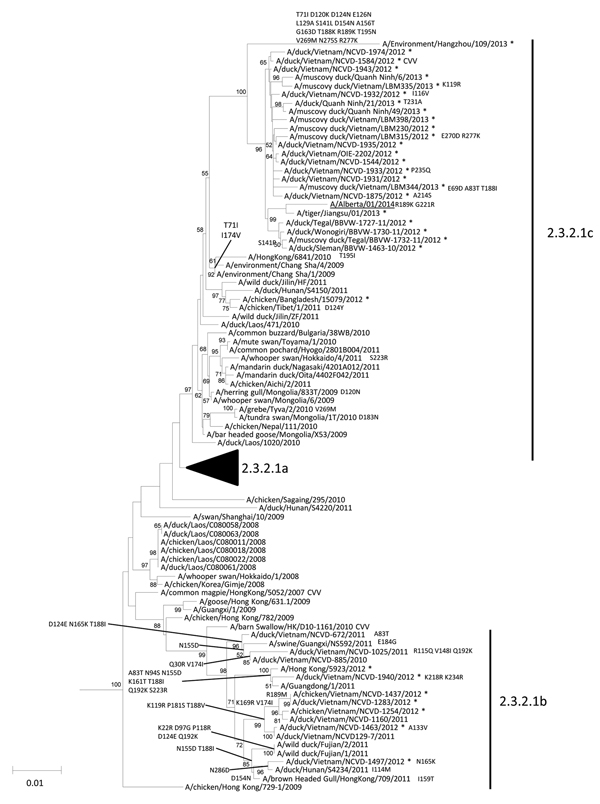Volume 20, Number 5—May 2014
Dispatch
Full-Genome Analysis of Avian Influenza A(H5N1) Virus from a Human, North America, 2013
Figure 2

Figure 2. Neighbor-joining phylogenetic tree of the hemagglutinin (HA) genes of clade 2.3.2.1 highly pathogenic avian influenza A(H5N1) viruses with A/Alberta/01/2014 (GISAID accession noEPI500771)The avian influenza A(H5N1) virus detected in Canada is underlinedThe nearest reassortant World Health Organization candidate vaccine viruses (CVV) for each group of clade 2.3.2.1 are denoted by CVVAsterisks indicated viruses collected in 2012–2014Amino acid differences at branch nodes indicate HA1 substitutions relative to the nearest CVV for clade 2.3.2.1 viruses (group 2.3.2.1c, A/duck/Vietnam/NCVD-1584/2012; group 2.3.2.1b, A/barn-swallow/HK/D10–1161/2010)Mutations to the right of each strain name indicate amino acid changes found only in that virus relative to the nearest CVVBootstraps generated from 1,000 replicates are shown at branch nodesScale bar represents nucleotide substitutions per siteBlack arrowhead indicates position of clade 2.3.2.1aGSAID, Global Initiative on Sharing Avian Influenza Data.